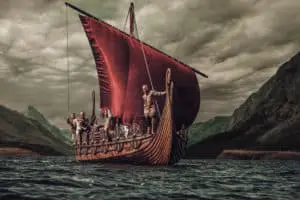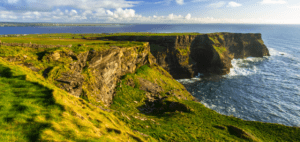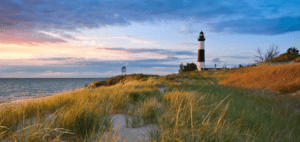Celtic Connections: Irish and Scottish Folklore Interwoven – Uniting Traditions and Tales
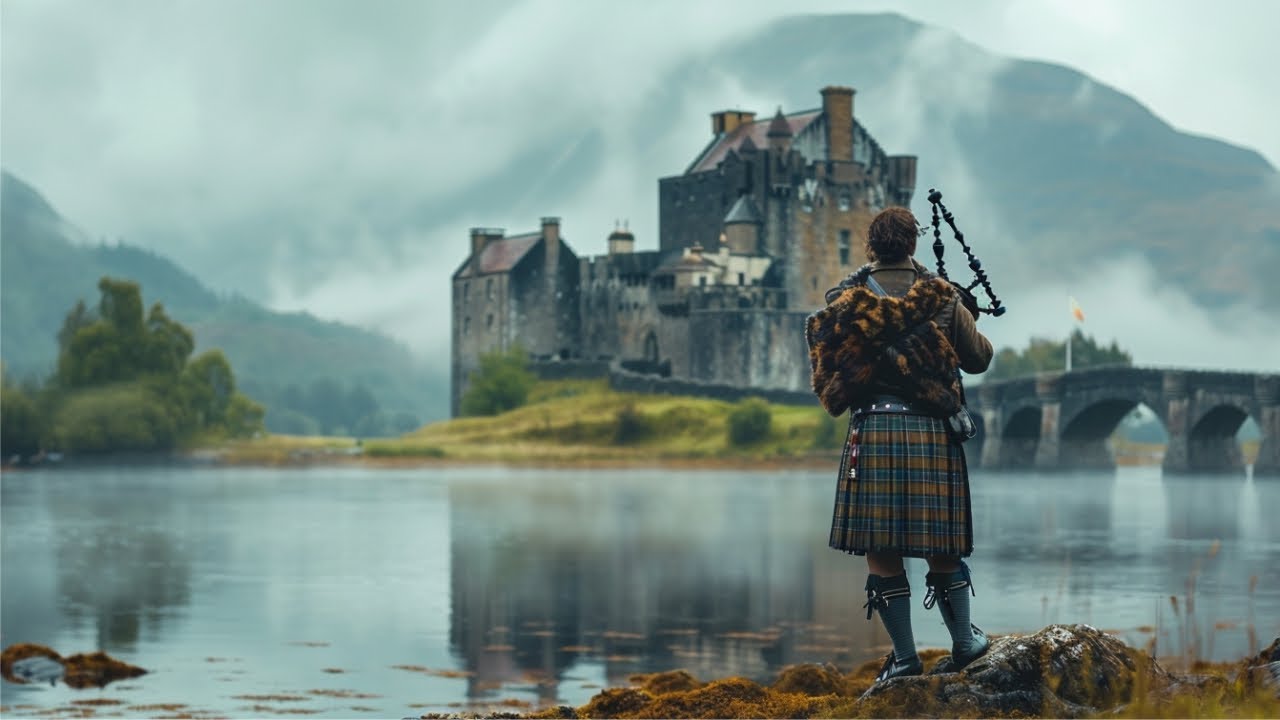
Updated On: April 22, 2024 by Eman Sameh
Embarking on a journey through the woven tapestry of Celtic folklore invites us into a realm where the myths and traditions of Ireland and Scotland intertwine. The shared heritage of these two nations is rich with tales of heroes, mystical deities, and age-old customs that have stood the test of time. In exploring these stories, we uncover the roots of a cultural identity that has flourished on the wind-swept isles of the North Atlantic. Their folklore is a testament to the power of narrative and the lasting bond of language and tradition.
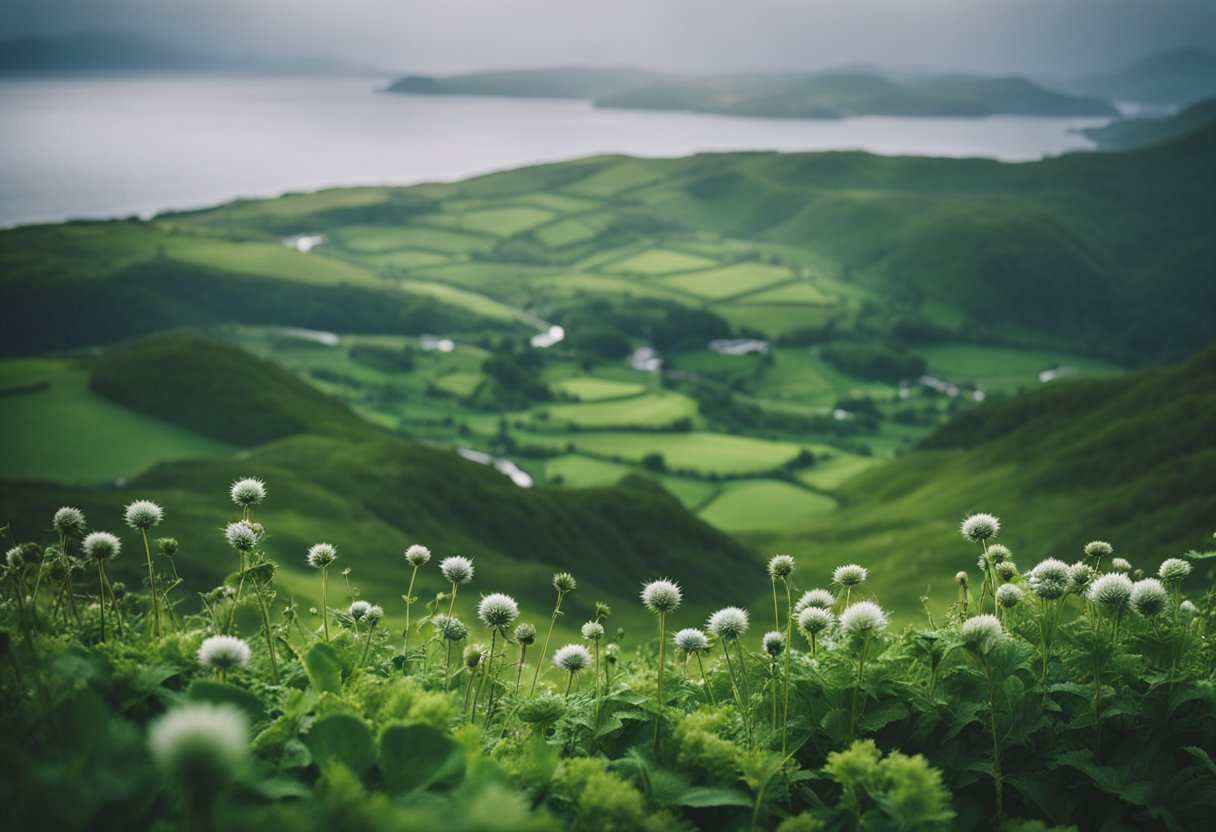
The interplay between Irish and Scottish folklore is not just an artefact of the past; it continues to influence our culture, art, and national identities. From the haunting ballads that echo in the pubs and valleys to the celebratory festivals that mark the turning of the seasons, these traditions are vibrant and evolving strands of the Celtic legacy. As we delve into the sagas and the symbols that have defined these nations, we’re reminded of the enduring connections that bind the Celtic peoples together, transcending modern borders.
The Roots of Celtic Folklore
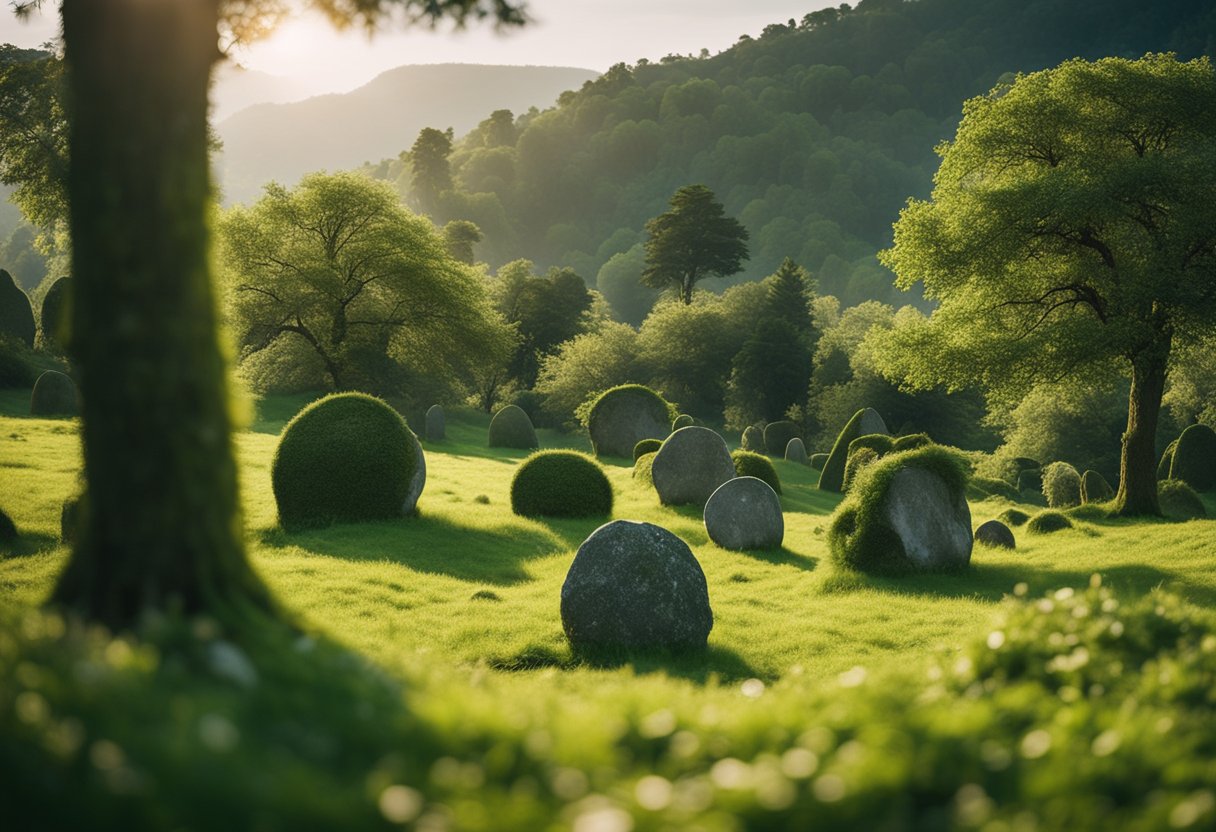
In examining the origins of Celtic folklore, we primarily focus on the ancient belief systems and the linguistic journey through which Gaelic languages have conveyed these tales.
Original Celtic Beliefs
The original beliefs of the Celtic people were polytheistic, with an emphasis on the natural world and its spirits. The Celts in Ireland and Scotland shared a similar religious foundation, venerating a pantheon of deities associated with elements of daily life and nature. Their practices and rituals aimed to honour these gods and goddesses, ensuring balance and favour in their lives.
Linguistic Heritage of Gaelic
The spread of Celtic languages, including Gaelic in Ireland and Scotland, provides a vital clue to understanding the dissemination and preservation of Celtic folklore. Gaelic, belonging to the group of Insular Celtic languages, carried stories, sagas, and lore through the generations, establishing a robust oral tradition. It is this vehicle of language that has allowed us to access a world rich with mythic heroes and legendary feats.
Celtic Mythology and Sagas
Celtic mythology is a tapestry of rich narratives and characters that have been passed down through generations. These stories, often rooted in oral tradition, encompass the divine, the fantastical, and the heroic, painting a vivid picture of the ancient Celtic world.
The Tuatha Dé Danann
The Tuatha Dé Danann are a race of divine beings who are central to Irish mythology. They are depicted as god-like figures with powers over nature and human affairs. According to legend, they ruled Ireland before the arrival of humans. Their stories are a seminal part of the Mythological Cycle, one of the most significant strands of Irish folklore.
The Four Cycles of Irish Mythology
Irish mythology is generally divided into four main cycles, each detailing a distinct set of stories and characters that have shaped Ireland’s cultural heritage.
- The Mythological Cycle: This cycle tells of ancient gods like the Tuatha Dé Danann and the beginning of the Irish gods and goddesses. It’s here that we first encounter the mystical stories that laid the foundations for much of Celtic folklore.
- The Ulster Cycle: Known for the epic tale of Táin Bó Cúailnge, the Ulster Cycle includes narratives of heroism and war, with the legendary hero Cú Chulainn at its centre.
- The Fenian Cycle: Detailing the exploits of Fionn mac Cumhaill and his warrior band, the Fianna, these stories explore themes of loyalty, bravery, and adventure.
- The Historical Cycle: Often called the Cycles of the Kings, these sagas blend the mythological with the historical, chronicling the deeds of Irish High Kings and their real-world implications.
These cycles collectively capture a bygone era when storytelling was not just entertainment but a means of preserving the history and beliefs of the Celtic people.
Folk Traditions and Celebrations
As we explore the tapestry of Celtic culture, it’s important to highlight how folk traditions and celebrations serve as a window into the past, bridging both the spiritual and the seasonal.
Samhain and Its Evolution
Samhain is an ancient Celtic festival from which many of today’s Halloween customs are derived. Held on the 31st of October, this significant date marked the end of the harvest season and the onset of winter—a time of year often associated with darkness and death. Remarkably, this date also signified the Celtic New Year, intertwining endings with new beginnings.
The night of Samhain was believed to be when the veil between the living and the dead was at its thinnest, permitting spirits to pass through. Our ancestors celebrated with bonfires, feasting, and rituals to honour the deceased—practices imbued with a deep sense of reverence and remembrance.
As centuries passed, Samhain underwent a transformation, influenced by religious shifts and cultural exchanges. Adopted by Christian traditions, Samhain was recast as All Hallows’ Eve, the precursor to All Saints’ Day. This sacred time was set aside for honouring saints and praying for souls yet to reach Heaven.
In modern times, Samhain’s legacy lives on through Halloween, an amalgam of various folk traditions and activities. We witness the continuation of costume-wearing, possibly harking back to the need for disguises to ward off harmful spirits. Trick-or-treating and pumpkin carving are also engrained customs, illustrating how celebratory acts evolve while maintaining echoes of their origins.
Through our celebrations of Halloween, we keep this richness of heritage alive, acknowledging the layers of history and belief that have shaped the festivities we partake in today.
Celtic Influence on Literature

Celtic culture has long influenced literature, leaving an indelible mark on both oral and written traditions. This section uncovers the historical and contemporary implications of this influence within English literature.
The Impact of Celtic Oral Tradition on English Literature
The tradition of storytelling, deeply embedded in Celtic culture, has reverberated through the annals of English literature. Shakespeare and Milton, for instance, have drawn from Celtic mythology and folklore, enriching their works with its themes and archetypes. The allusions to mythological creatures and the use of supernatural elements in Shakespeare’s plays can be traced back to Celtic oral traditions. These narratives, passed down through generations, have provided a rich source of material and inspiration for countless literary works.
Celtic Themes in Modern Narratives
In modern times, Celtic influences continue to thrive within the literary landscape. The North East Irish Culture Network contributes to this by promoting the unique cultural identity of this region through literature. Charles Robert Maturin and Liam McIlvanney stand as significant figures in relaying these enduring Celtic themes. Furthermore, texts like “Representing Ireland” and discussions spearheaded by scholars like Willy Maley are ensuring that this formative connection receives recognition. Modern Irish literature is characterised by its ability to weave these ancient Celtic themes with contemporary issues, breathing new life into traditional stories and perspectives.
Historical Interactions and Cultural Exchange
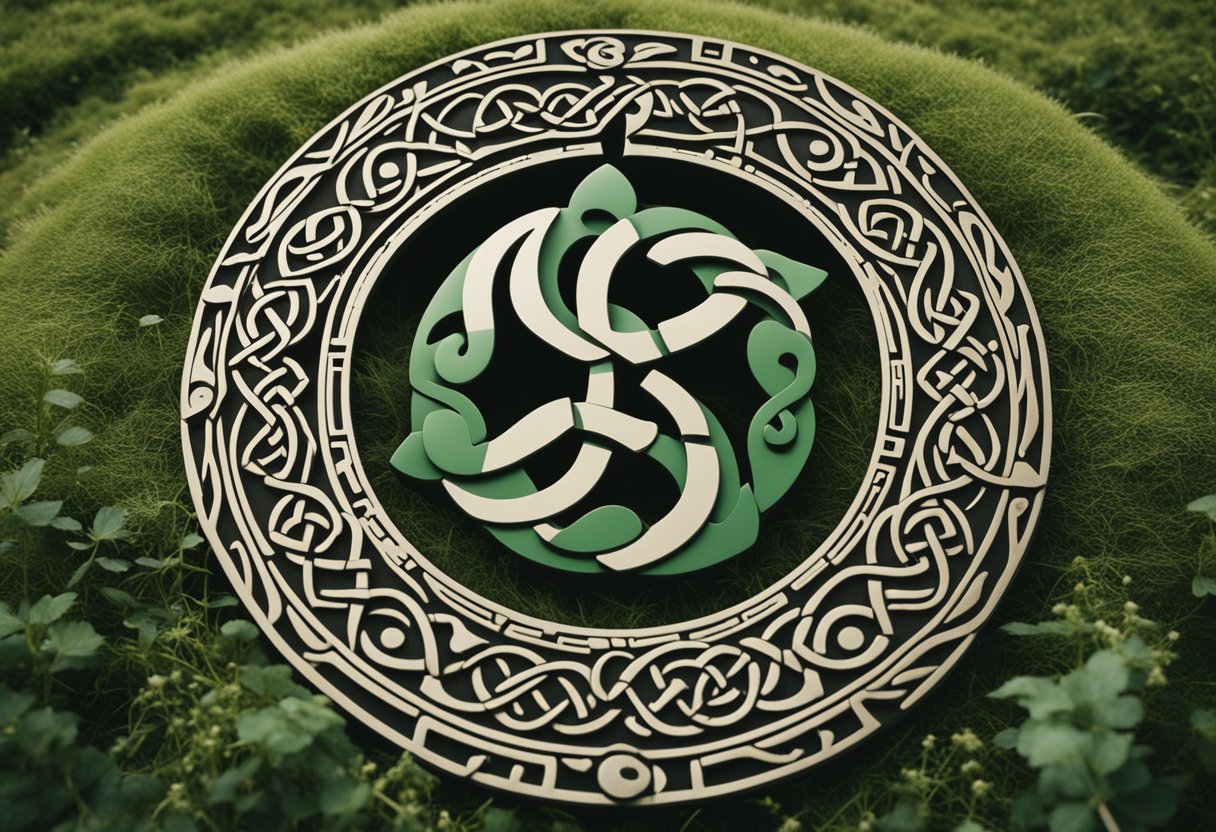
We explore the rich tapestry of Celtic interactions, examining how centuries of contact and cultural exchange have shaped the identities and folklore of both Ireland and Scotland within the broader historical contexts.
Celtic and English Renaissance Studies
During the English Renaissance, a period marked by a resurgence in classical learning and the arts, there was a significant cross-pollination of ideas and cultural practices between the Celts and the English. Irish and Scottish scholars often travelled to England for education, while English literary figures were influenced by Celtic myths and stories. This confluence of Celtic and English intellectual traditions helped to enrich Renaissance studies, fostering a unique cultural blend that has intrigued scholars for generations.
Ireland and Scotland in the Context of Empire
The imperial ambitions of England brought the Celtic nations of Ireland and Scotland into a complex relationship with the notion of ’empire’. Political and economic pressures often forced the Scottish and Irish to navigate their cultural identities amidst English dominance. Irish and Scottish involvement in imperial ventures, both as resistors and facilitators, thus played a pivotal role in shaping contemporary cultural dialogues. This entanglement with empire had lasting effects, profoundly influencing their folklore, literature, and sense of self.
Celtic Symbols of Power and Identity
Celtic symbols often embody a tapestry of cultural significance, representing the profound pillars of power and identity within Irish and Scottish folklore. These emblems, interwoven through centuries of storytelling and tradition, have continually served as heralds of heritage and markers of belonging.
The Significance of the Harp and Its Descendants
The harp, often seen as a national emblem of Ireland, transcends mere musicality to resonate with the Irish identity and state. Its strings have vibrated through history, echoing the nation’s culture in the hearts of its people. This instrument, while it possesses an inherent grace, also functions symbolically as a powerful declaration of Irish sovereignty and artistic heritage.
In Scotland, the clàrsach, a Scottish variant, similarly boasts a legacy intertwined with Gaelic culture, evoking a rich blend of nobility and traditional lore. The harp represents continuity; its descendants, both literal and metaphorical, still strike chords in contemporary Celtic music.
Utilised by bards to regale and immortalise the exploits of chieftains and kings, the harp’s prestige has spanned the ages. It is no mere relic; it continues to serve as a dynamic symbol of Celtic resilience and creativity. The harp’s image adorning official documentation and state symbols bears testament to its unwavering position within the pantheon of Celtic identity.
In essence, through the harp and its enduring lineage, we connect with the ancestral tapestry that defines our collective Celtic soul.
The Celtic Nations Today
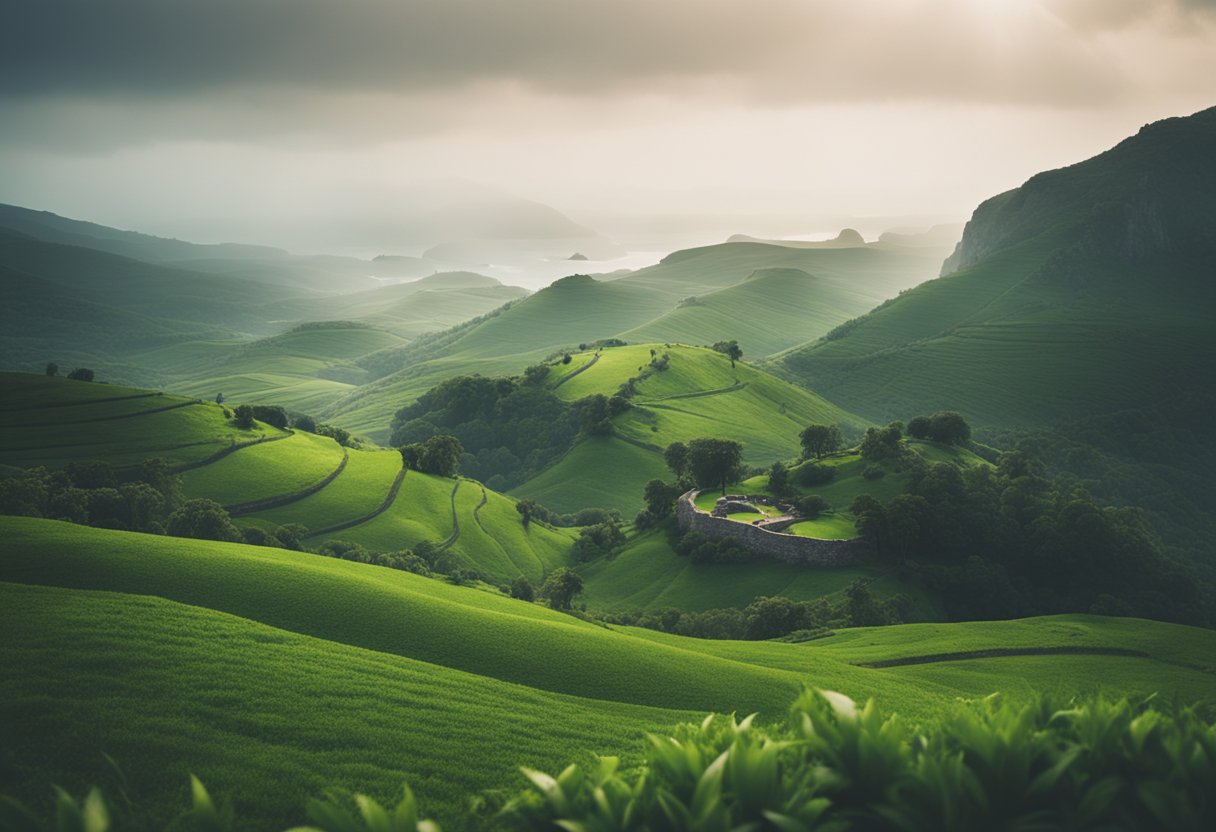
In the modern context, the Celtic nations continue to celebrate their unique cultural identities and languages, with a focused effort on preserving and revitalising their rich heritage.
Preservation and Resurgence of Celtic Culture
Celtic culture across Ireland, Scotland, Wales, and the other Celtic nations endures through the preservation of traditions and a resurgence of interest in Celtic identity. We witness a wealth of cultural festivals like Feis that encourage the continuation of traditional music and dance which have been at the heart of Celtic communities. Additionally, modern interpretations of Celtic music and art are seeing growing popularity, ensuring the relevance of these expressions in today’s world.
Celtic Languages in the Modern Era
Despite facing challenges over the centuries, the Celtic languages, including Irish, Scottish Gaelic, and Welsh, are experiencing a revival. In Scotland, efforts to increase the visibility and use of Scottish Gaelic can be seen in education and media, while in Ireland, the Irish language has become a core part of national identity and is taught in schools across the country. Wales has made significant strides by making the Welsh language compulsory up to the age of 16, which demonstrates a commitment to sustaining one of its most important cultural pillars.
Politics and Nationalism in Celtic History
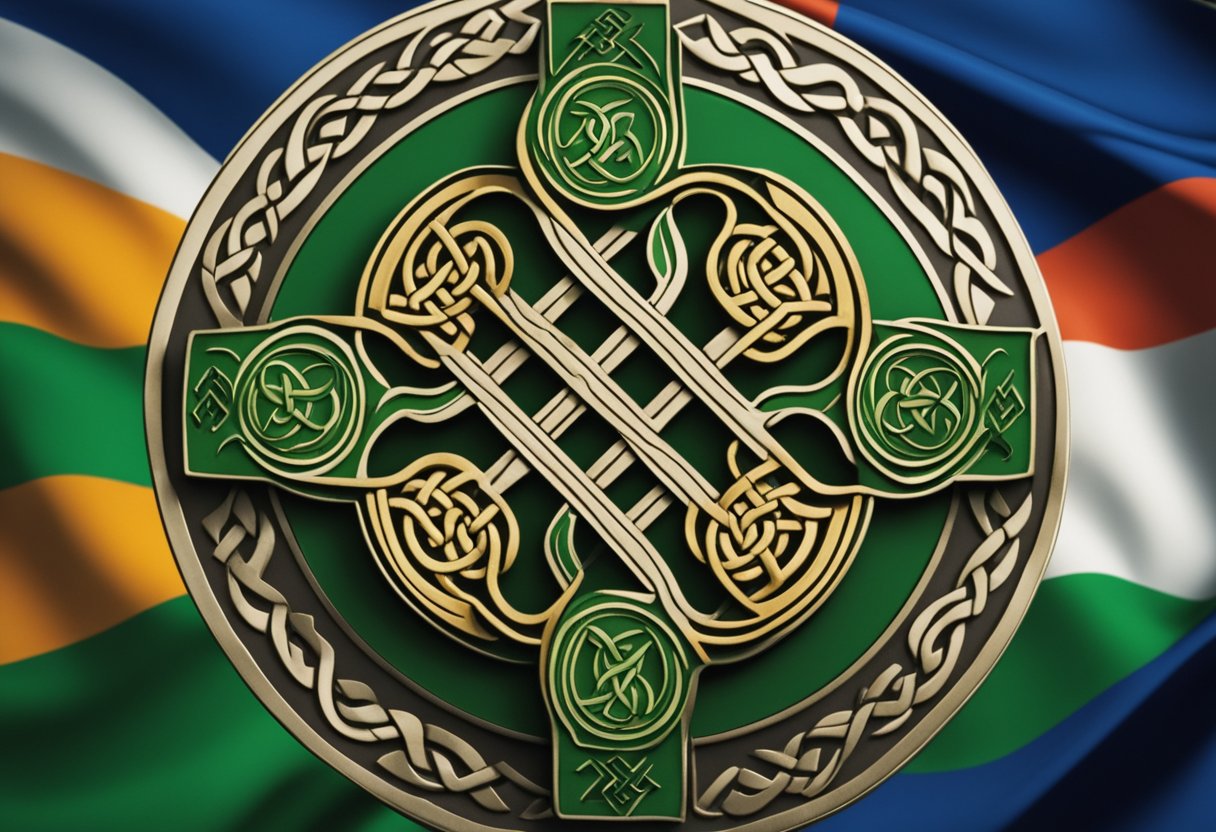
Celtic history is an intricate tapestry of political dynamics and nationalism, especially reflected in the leadership and legacy of historical figures. Our narrative will explore the intersection of these elements within Celtic society.
The Legacy of Brian Boru and Celtic Leadership
Brian Boru, the iconic High King of Ireland, remains a potent symbol of Irish nationalism and unity. His reign, notably marked by the consolidation of power and the pivotal victory at the Battle of Clontarf in 1014, exemplifies the theme of strong leadership in Gaelic politics. Boru’s efforts to resist foreign influence and uphold Celtic traditions laid down a significant marker in our history, reinforcing the notion of a nation defined not by conquest or division, but by a shared cultural and political identity.
Our understanding of Boru’s time accentuates not just his military triumphs, but also his political acumen in securing alliances and fostering a sense of Irish nationhood that transcended individual clan rivalries. It is under his leadership that the concept of a united Irish polity gained prominence, influencing subsequent generations and still resonating in the collective memory of the nation.
The examination of Brian Boru’s legacy provides us with insights into the deep-rooted significance of politics and nationalism in shaping Celtic history. Our retelling of this chapter underscores the enduring importance of leadership figures who strive to embody and protect the cultural essence of their people.
Folk Arts and Crafts
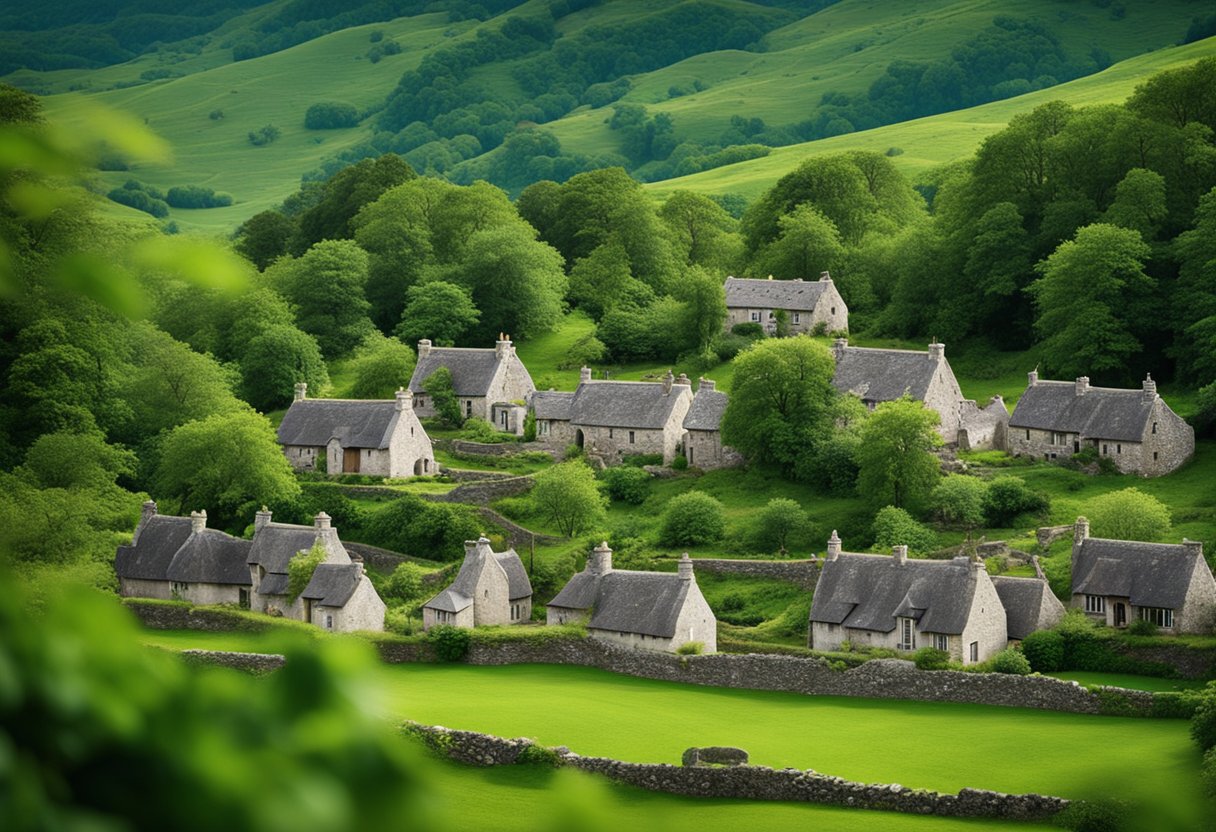
Celtic connections span centuries, intertwining Irish and Scottish folklore through a tapestry of arts and crafts that continue to be celebrated and preserved. These crafts offer more than aesthetic appeal; they embody storied traditions and cultural narratives.
The Tradition of Celtic Art and Artisanship
The Celtic tradition of art and artisanship is deep-rooted in the visual expression of folklore, with a distinct style emanating from ancient times. Art forms such as intricate knotwork, vivid manuscripts, and symbolic metalwork are a testament to the technical prowess and creativity of Celtic artists. Often encapsulating the interplay between the natural world and mythological narratives, these pieces convey stories and beliefs integral to Celtic culture.
In crafts, numerous items ranging from textiles to ceramics and jewellery carry the Celtic emblem. Utilising materials that hark back to ancient practices, skilled artisans create works that reflect both historical and contemporary influences. Through festivals and gatherings, such as Celtic Connections, these crafts gain a platform for appreciation beyond their local origins.
Traditions of crafting are passed down through generations, ensuring that these symbolic designs and methods remain alive. By engaging with these crafts, we participate in a cycle of cultural continuity, ensuring each piece remains imbued with the heritage it represents.
Our role in this legacy is not just as spectators, but as custodians; by valuing and supporting traditional Celtic crafts, we help safeguard a rich cultural heritage. Sites like Connolly Cove enrich our understanding by delving into the history and present state of Irish and Scottish folk art, reminding us of the global narrative to which these crafts belong.
Popular Myths and Their Origins
In exploring the distinctive strands of folklore that weave through Irish and Scottish cultures, we encounter a rich tapestry of oral traditions and beliefs. These stories have transcended generations, firmly rooting themselves in the cultural consciousness of these nations.
Celtic Folklore in Contemporary Media
In the realm of contemporary media, Celtic folklore has found a new lease of life, enchanting audiences worldwide with tales that were once preserved through spoken word alone. It is within the intricate narrative threads of folklore and oral traditions that we find a continuity of beliefs and stories, reflecting the depth of Celtic heritage.
Irish mythology, as arguably the most well-preserved form of Celtic mythology, offers a wealth of traditional stories. Television series, films, and literary works have drawn inspiration from such mythological figures as the sovereignty goddess, who represents the land and symbolically marries the king. This act resonates across different Celtic cultures, a motif personifying the nation and ensuring continuity of tradition.
Notoriously, Scottish folklore has contributed the enchanting myths of selkies — seals that can shed their skin to become human. This compelling folklore captures imaginations, blurring the lines between humans and nature in Scottish tradition. Contemporary interpretations often romanticize these narratives, reflecting society’s ongoing fascination with the mysticism of Celtic cultures.
- Celtic Mythology: Myths, Legends, Deities, Heroes and Culture: A summary of the ancient Celtic pantheon and polytheism.
- What Is Irish Mythology? (And How Is It Different From Celtic Mythology?): The uniqueness and preservation of Irish mythology are distinct from the broader Celtic traditions.
The interplay between Irish and Scottish folklore within contemporary media not only celebrates the past but continues the evolution of these narratives. It provides a critical link to our communal heritage and retains the core values and ideologies of the ancient Celts in a modern context.
Influence on Other Artistic Expressions
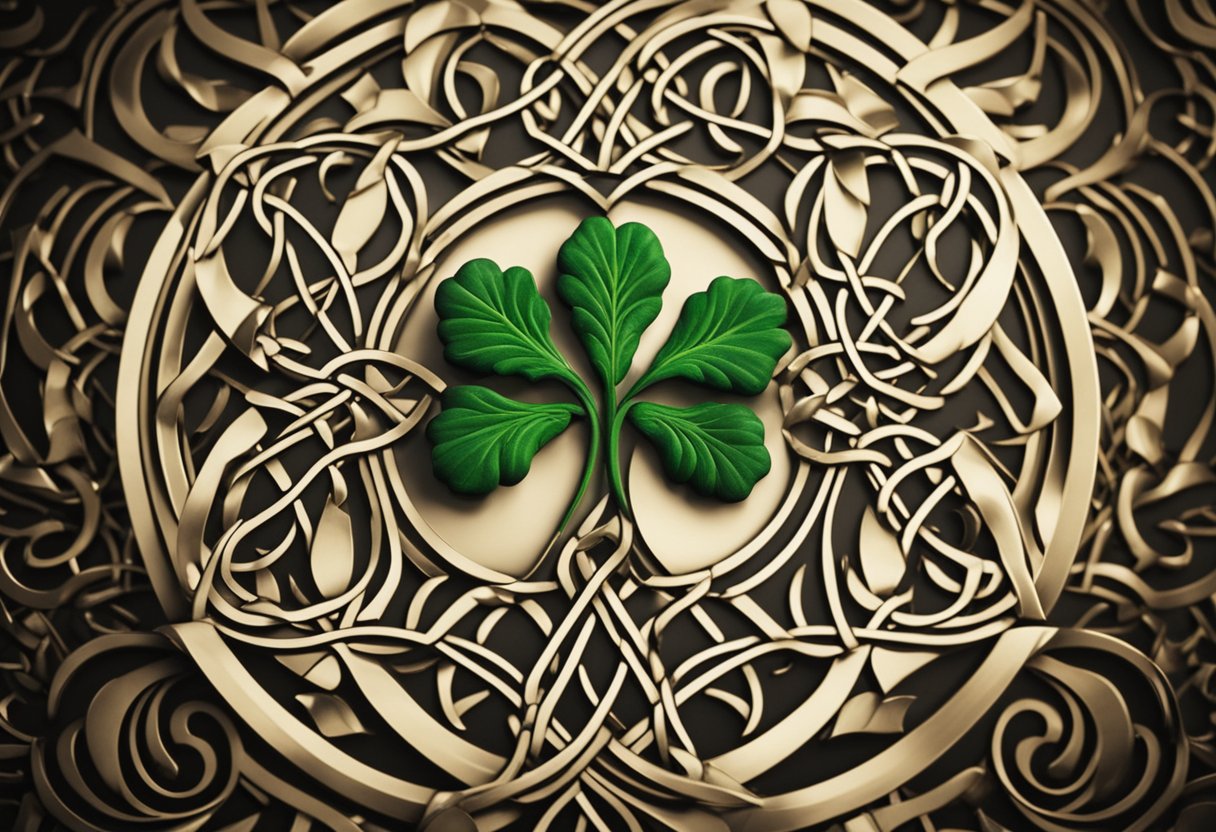
Celtic culture has had a profound impact on a range of artistic forms, from visual art to theatrical performances. We explore how these traditions have informed and enriched the broader world of creativity.
Celtic Music and Dance
Music: Celtic music, a genre centuries old, is best known for its haunting melodies and lively dances. Characterised by distinct instruments like the uilleann pipes, fiddle, and bodhrán, this music style has spread far beyond its origins. It has been integral in shaping contemporary folk music scenes worldwide.
Dance: Accompanying the rhythmic tunes are traditional dances that display both the elegance and energy of Celtic culture. Irish dances such as the jig and the reel have gained global recognition, particularly through shows like Riverdance. Scottish ceilidhs, social events with dancing often set to fiddle music, are regular features in community celebrations, reinforcing the role of dance as both an artistic and social glue in Celtic and broader cultural contexts.
Frequently Asked Questions
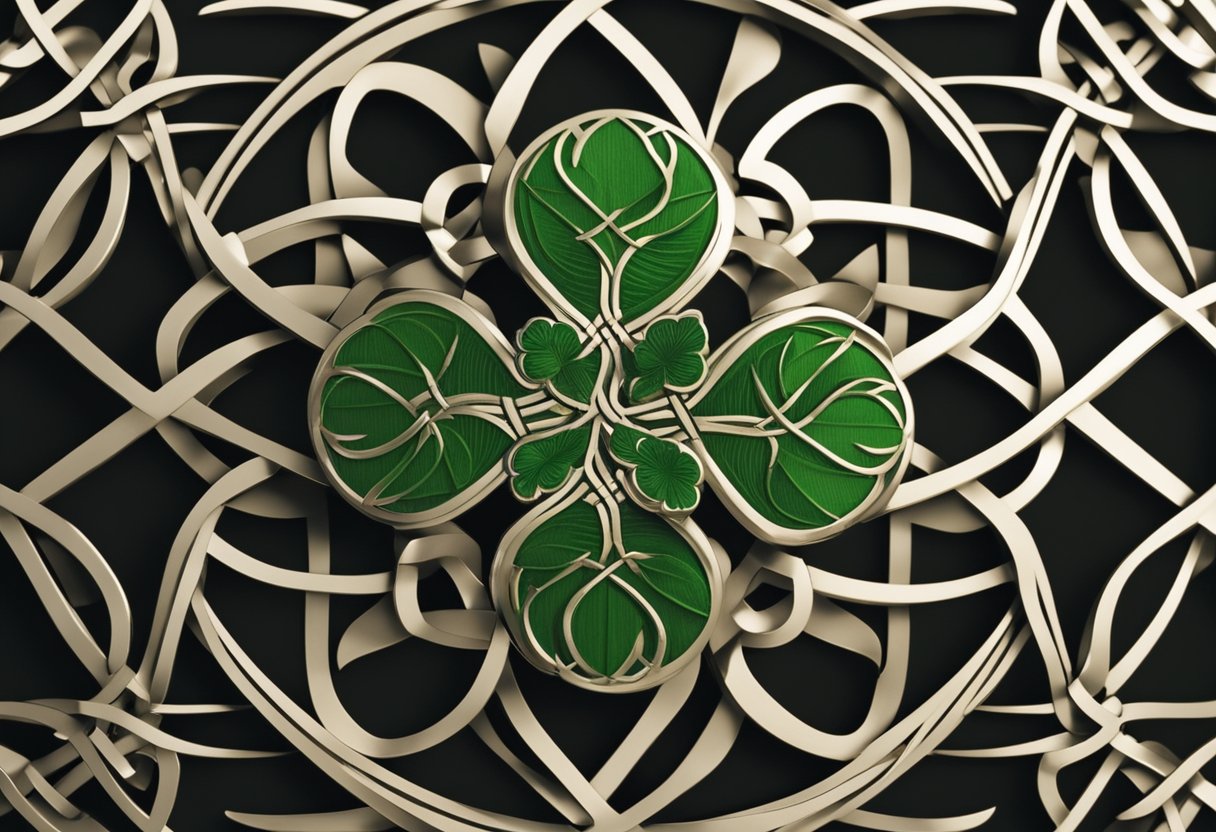
In this section, we address some of the most common inquiries about the interconnection between Irish and Scottish folklore, delving into their similarities, key historical figures, and the impact on contemporary Celtic culture. We also touch upon specific cultural contributions and festivals that celebrate this shared heritage.
What are the primary similarities between Irish and Scottish folklore?
Irish and Scottish folklore are closely linked through a shared Gaelic heritage, with many stories, characters, and motifs that are similar or have parallels. Both traditions feature a rich tapestry of myths, legends, and fairy tales that include mythical creatures and heroes.
Who are the key figures in the history of Celtic Connections?
Historical figures important to the Celtic Connections include literary characters like Finn MacCool (Fionn mac Cumhaill) from Irish mythology, and Scotland’s Ossian, said to be a poet and warrior. Figures such as Saint Patrick, synonymous with Ireland, also had influence on Scottish religious and cultural practices.
How do Irish and Scottish beliefs in animism compare?
In both Irish and Scottish beliefs, animism plays a significant role, where natural elements and landscapes—such as rivers, trees, and stones—are believed to possess spirits. This belief system reflects the deep reverence for nature common to both Celtic cultures.
What influence have Irish and Scottish mythologies had on modern Celtic culture?
Irish and Scottish mythologies continue to influence Celtic music, literature, and art. They shape modern cultural identities, festivals, and the preservation and revival of the Gaelic languages. Mythological themes often inspire contemporary artists and musicians, creating a living tradition rooted in the past.
Can you explain the significance of the Bothy Band in Celtic Connections?
The Bothy Band was a traditional Irish folk group in the 1970s that revolutionised Irish folk music, intertwining elements from both Irish and Scottish traditions. Their work significantly contributed to the popularity and revival of traditional Celtic music, inspiring numerous musicians and influencing the genre internationally.
What is the duration of the Celtic Connections festival held in Glasgow?
The Celtic Connections festival, held in Glasgow, typically lasts about two weeks and celebrates traditional and contemporary Celtic music along with a blend of international folk artists. It is one of Scotland’s most prominent music festivals, attracting audiences from around the world to participate in concerts, ceilidhs, talks, and workshops.


